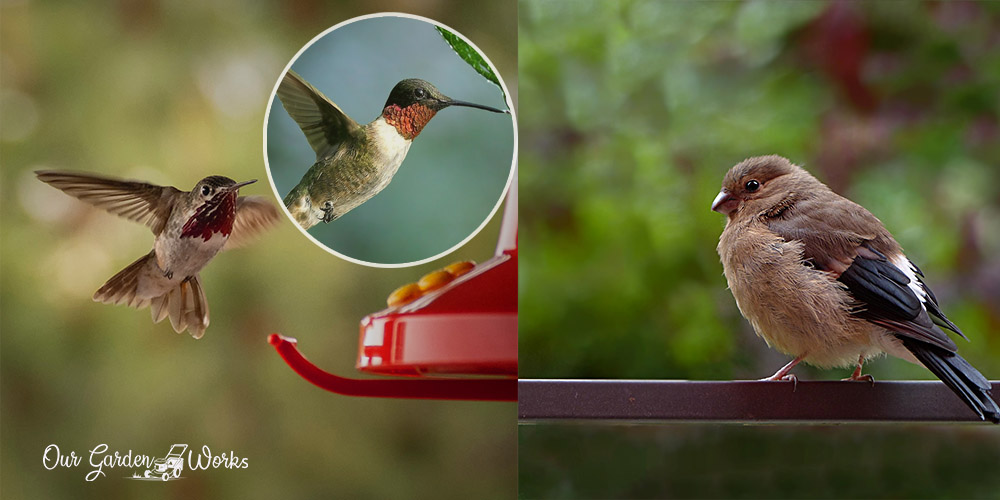Birds are a valuable part of the ecosystem. Having them in your yard makes them an excellent ally against pests and boosts the pollination of your plants. Discover how to attract birds to your yard and hear them serenade you every morning.
In this post, learn more about the role of birds in your local garden and how you can attract and make them comfortable staying.
Benefits of having birds in your garden
Some people may argue that you can have a beautiful garden without birds. They can even tell you that birds are just another liability since you’ll be dealing with birds’ poop all over your yard.
Though these naysayers have a point, the following benefits are also facts about how birds impact your garden on a larger scale.
Birds singing in your yard creates a relaxing environment
According to some studies, bird sounds help humans relieve stress and mental fatigue. They help trigger a comforting memory in humans that allow them to momentarily reminisce and divert their attention to a good memory.
Birds can help pollinate your plants
With the decreasing number of bees and beneficial insects due to wide scale pesticide use, birds and bats are the second-best pollinators for your plants.
Pollination is the reason behind the beautiful blooms and delicious fruits that makes gardens one of a kind. These types of birds are the common pollinators you can find in the garden:
- Ornithophily.
- Hummingbirds.
- Spiderhunters.
- Sunbirds.
- Honeycreepers.
- Honeyeaters.
The birds listed above pollinate bright-colored and fragrant flowering plants. Hummingbirds, in particular, love visiting the following plants and accidentally pollinating them as they collect seeds and nectar:
- Hibiscus.
- Bromeliads.
- Fuschias.
- Verbenas.
- Shrimp plants.
- Bee balm.
- Honeysuckle.
Birds can help control pests from aphids to rodents
Birds may spread poop in your yard but they can also help you save on pesticides.
Pests like aphids and other notorious sap-sucking insects are the favorite snack of birds. They are the natural predators that you can freely invite in your garden to deal with your pest problems, such as:
- Moths.
- Aphid.
- Grasshoppers.
- Crickets.
According to Utah State University, the following birds are the best allies for gardeners in controlling the respective pests they love to eat:
| Type of bird | Insects and animals they eat |
|---|---|
| Bluebirds | Grasshoppers, shrews, lizards, salamanders, snakes, lizards. tree frogs |
| Chickadees | Scale, aphids, leafhoppers |
| Woodpeckers | Borers, larvae, weevils, bark beetles, overwintering codling moths |
| Wrens | Grasshoppers, caterpillars, and spiders |
| Sparrows | Beetles, caterpillars, cutworms |
| Swallows | Moths, beetles, grasshoppers |
| Titmice | Aphids, leafhoppers, caterpillars, beetles |
| Warblers | Caterpillars, aphids, whiteflies |
| Birds of prey | Mice, voles, gophers |
| American kestrel | Mouses, grasshoppers, spiders, cicadas, beetles, scorpions, dragonflies, butterflies, moths |
| Barn owls | Big rodents, small birds, gophers |
| Cardinals | Beetles, grasshoppers, leafhoppers, stink bugs, snails |
| Grosbeaks | Larvae, caterpillars, beetles |
| Nuthatches | Borers, caterpillars, ants, earwigs |
| Oriole | Caterpillars, larvae, beetles, grasshoppers |
Seeds are part of a bird’s diet. As they fight with other wild animals to plant seeds, they are also playing a huge role in seed dispersal.
They unconsciously do the seed distribution through the seeds that slip off their beaks and those that attach to their feathers while they’re in transit.
Birds also disperse seeds as they feed on fruits. Their digestive system can only digest the flesh of the fruits and process the seeds through their droppings.
Who would have thought that bird poops are a gold mine of seeds and nutrients for the soil?
Birds help in weed control
Birds’ love for seeds also allows them to aid in weed control. They feed on weed seeds that prevent them from germinating and overwintering in the soil. The birds that can greatly help you deal with the headache brought by weeds are
- Doves.
- Sparrows.
- Quail.
- Towhees.
- Finches.
Bird poop help feed the soil
Forests and natural habitats benefit from the droppings of wild animals and the decomposition of plant materials in enriching the soil.
According to studies, granular bird droppings are one of the best organic fertilizers. They are rich in nitrogen, do not leach into the soil, and do not cause salt accumulation in the soil.
8 Ways how to attract birds to your yard
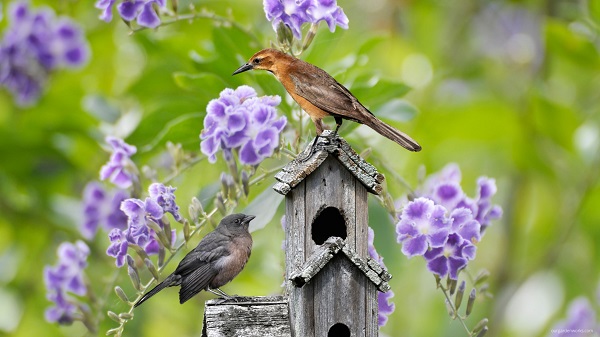
If inviting birds into your property can help you save on pesticides, fertilizers, and seed spreaders, who wouldn’t love to have them in their yard?
If their role in the environment amazes you, here are some ways to help them come and stay in your garden:
#1 Place a bird bath in your garden or yard
Birds have no sweat glands. So, they don’t need water that much. However, they need it most during summer for bathing and drinking and in winter when natural sources of water are frozen.
During the growing season, place a bird bath in the shaded part of your garden using a basin filled with fresh clean water to attract thirsty birds around.
You can either make a DIY bird bath or buy unique designs that match the aesthetic of your garden. If you choose to save on costs, here are some cool designs that you can try:
Birdbath on top of a tree stump
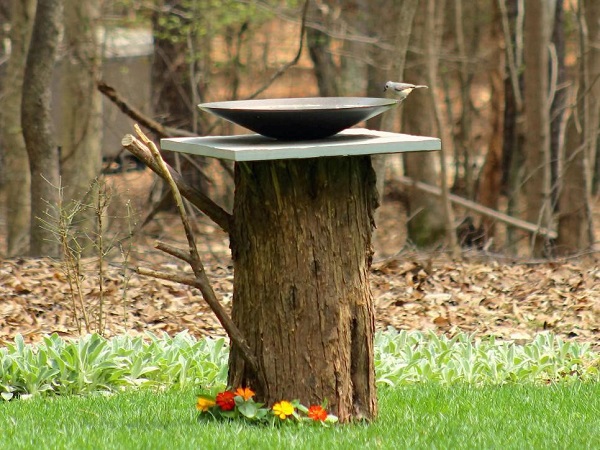
Repurposed sink
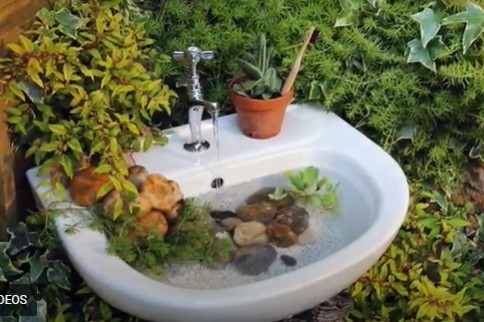
Repurposed broken bowls and basins
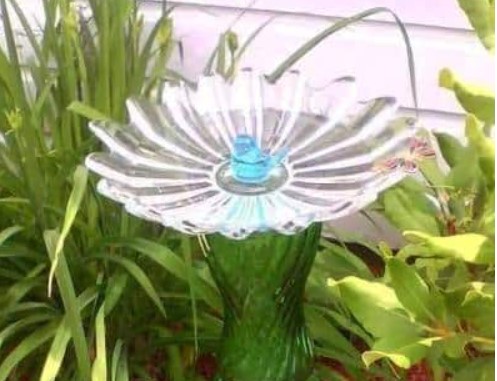
If you want something that’s unique and ready-to-use, here are some beautiful selection of bird baths that you can choose from
- Alpine Corporation TEC108 Birdbath Yard Statue.
- Arcadia Garden Products Stone Fiberclay Birdbath.
- MUMTOP 31 Inch Height Glass Birdbath.
It takes around 2 to 4 weeks before birds notice your newly installed birdbath. So, try to be patient if there’s no bird showing up for the first few days after installation.
If there are no birds visiting your birdbath within a month, here are some possible reasons why:
- The water level is too deep.
- Some predatory animals are around like your pets or wild animals.
- The water is dirty or frozen.
#2 Grow more fruit-bearing or other bird-friendly trees
Plant some bird-friendly trees in your yard to provide a safe haven for birds. Fruit-bearing trees are among the best since their seeds and fruits are excellent bird food.
Here are some bird-favorite trees and plants that you can grow at home:
- Guelder rose.
- Hawthorn.
- Ivy.
- Birch tree.
- Flowering dogwoods.
- Wild black cherry.
- Chokecherry.
- White oak tree.
- Willow tree.
- Eastern white pine.
#3 Create a bird hotel
Birds need a safe place to lay their eggs and raise their young during the growing seasons, especially during the summer.
Their high and hidden nests ensure that they grow in a safe environment away from predators. One way to invite them to your home is to provide them with safe nest boxes or birdhouses.
Placing bird houses next to bird baths makes them a good combo for inviting birds looking for a place to nest and stay during winter.
The best time to set up nesting boxes is during fall to serve as their shelter during winter and it will have a higher chance to be their nesting place in the next growing season.
Here are some bird hotel or nesting boxes options that you can choose from:
- Nature’s Way Bird Products Cedar Bluebird Box House.
- YJJKJ Pet Wood Parakeet Budgie Breeding Nesting Bird Aviary Cage Box
- Kingsyard Bird House
#4 Build a water garden with flowing water
Birds have a profound sense of hearing that makes them attracted to the splash and bubbling of water. They notice the water flow and have an instinct that flowing water means fresh and clean water.
If you want to keep them around your yard, you can:
- Construct a water garden with a waterfall feature.
- Add a fountain in the bird bath.
- Build a fountain close to the bird box.
Flowing water not only attracts birds but also creates a relaxing ambiance in your garden. A simple water feature for birds can transform your garden into a mini paradise.
Imagine yourself listening to the sound of birds singing and the splash of water on a cozy morning! Isn’t that something any living thing would want to stay in?
#5 Plant brightly-colored flowers
Birds have eyes that detect flowers among vast vegetation. It helps them track flowers with seeds that they can eat. They particularly love flowers with the following colors:
- Red: Cardinal flower, holly, cotoneaster, viburnum.
- Pink: Zinnia, coneflower, phlox, cosmos.
- Orange: Milkweed.
- Yellow: Sunflower, goldenrod, coreopsis, marigold.
Add some of the flowering plants from the list above to your landscape including some fruit trees. After a few weeks, you’ll hear the birds chirping in the morning, especially when the flowers and seeds emerge.
#6 Place a bird feeder
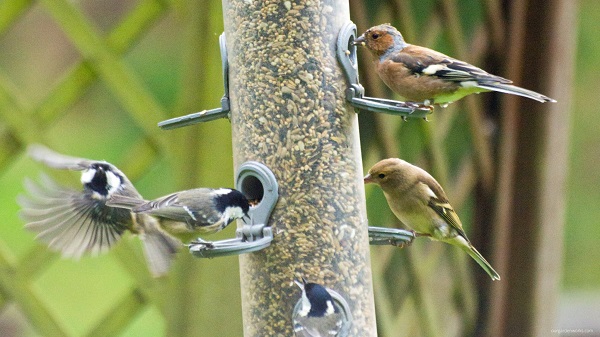
In the absence of flowering plants and fruit-bearing trees, you can take a shot with bird feeders.
The decline of bird habitat and scarcity of food sources in your area can drive the birds to visit your property and take shelter in your garden.
Here are some of the bird feeders that you can place close to the fruit trees or water garden in your yard:
- Gray Bunny 4-Port Bird Feeders for Outdoors Hanging
- Twinkle Star Wild Bird Feeder
- Perky-Pet Squirrel-Be-Gone Bird Feeder
Reminder: Birds are not the only animals that you can attract with bird feeders. Seed-eating wild animals like chipmunks and squirrels can also flock to your property.
So, the best way to deal with them is by doing the following strategies:
- Suspend the bird feeder between two trees using a string.
- Place soda bottles on both ends of the bird feeder in a horizontal position. When a squirrel or raccoon attempts to reach the feeder, the bottles will roll as they step on it, making them fall to the ground.
#7 Create an open space where they can roam and receive sunlight
Birds are easily shocked by the presence of other animals and humans. So, they should have enough space where they won’t be bothered by motions from you or your pets.
Your yard should also have a space where they can spread their wings, fly and do activities they naturally do in their natural habitat.
#8 Keep your pets indoors
Pets can find birds as an ideal target to play with. From the bird’s perspective, cats, dogs, and predatory birds like owls are threats to their existence.
If you installed bird feeders or bird baths in your yard, restrict your pets from roaming around that area to avoid scaring off interested birds.
You can help your pets and birds coexist by placing bird baths and bird feeders on trees. It must be suspended high enough so they won’t try to eat the seeds and topple over the birdbath.
However, the next challenge would be the tree-climbing critters like chipmunks that may steal from the birdfeeders. You may add a nesting box on the trees where the birds can exclusively feed on the seeds without any competition.
Final Thoughts
Learn how to attract birds to your yard and watch how they can transform your garden into a tiny sanctuary.
Birds are one of the most vulnerable groups of animals on our planet due to hunting and habitat destruction. They deserve more love and appreciation not only for their melodies but also for their great contribution to our ecosystem.
We hope this post gave you some tips to invite birds into your yard.
Let us know in the comments about your observations about the birds. How long did it take to visit your place?
Also, please don’t forget to share this post with your friends and help them appreciate the wonderful experience of having birds in your garden.
